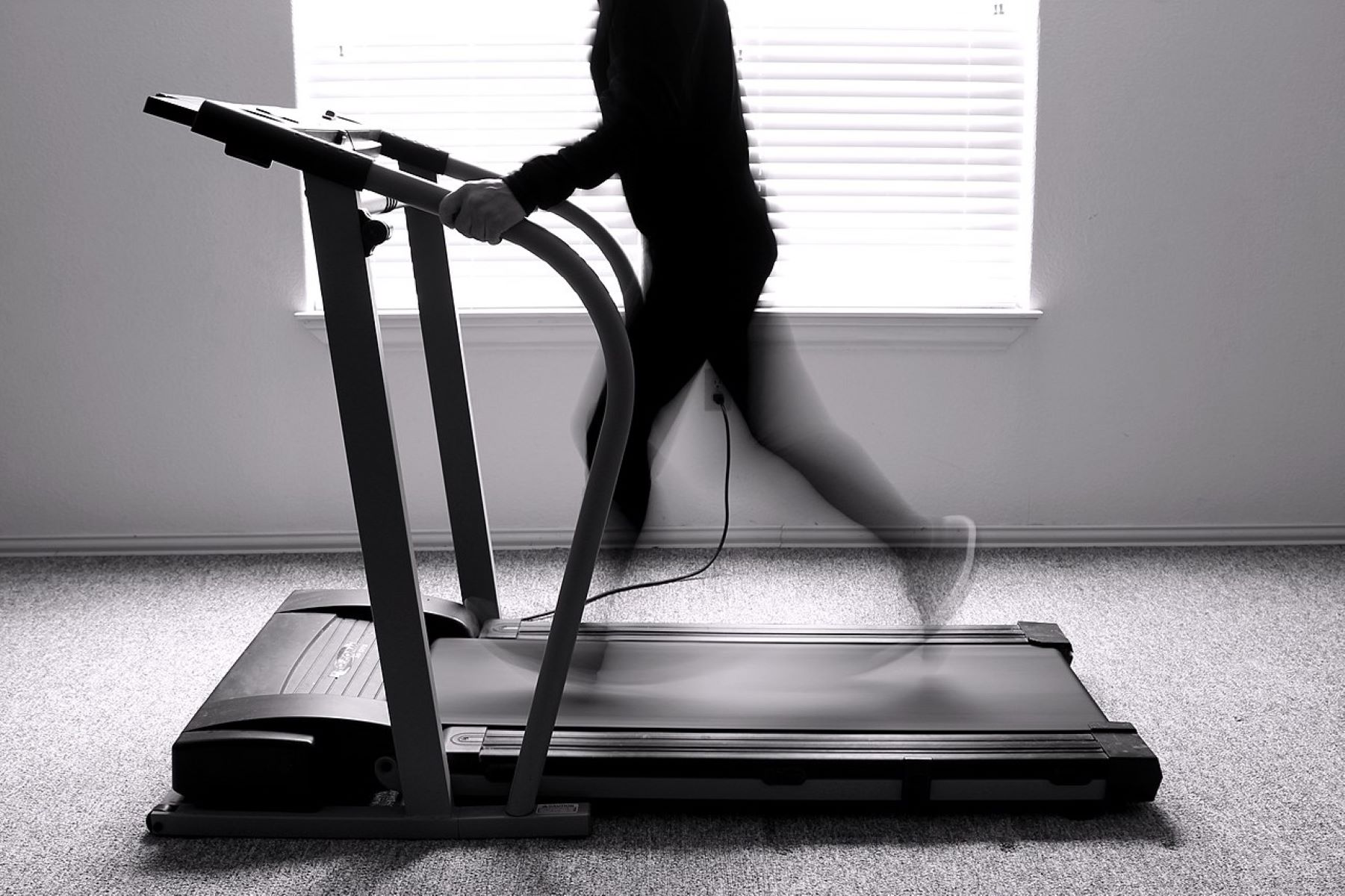Home>Misc>Featured>How Much Rest Is Needed Between Interval Training Sessions?


Featured
How Much Rest Is Needed Between Interval Training Sessions?
Modified: January 2, 2024
Discover the ideal amount of rest required for optimal performance between interval training sessions. Learn from our featured experts and take your training to the next level.
Introduction
Interval training is a popular and effective training method that involves alternating between high-intensity exercises and periods of rest or lower intensity. Whether you’re a professional athlete or a fitness enthusiast, incorporating interval training into your workout routine can help you improve your cardiovascular fitness, increase your endurance, and burn more calories.
While the high-intensity bursts of exercise are crucial for reaping the benefits of interval training, the rest periods between these intervals play a vital role in maximizing the effectiveness of the workout. These rest periods allow for recovery, help prevent exhaustion and injury, and provide the body with the energy it needs to perform well during the high-intensity segments.
Determining the appropriate rest periods for your interval training sessions can be a bit challenging as it depends on various factors, including the type of exercise, your fitness level, and your overall goals. In this article, we will delve deeper into the importance of rest in interval training, explore the factors that influence the optimal rest periods, and provide some guidelines to help you determine the right rest intervals for your training sessions.
Understanding Interval Training
Interval training involves alternating between periods of high-intensity exercise and periods of rest or lower intensity. This training method is highly efficient and time-effective, as it allows you to push your body to its limits in shorter bursts, maximizing the benefits of your workout.
During the high-intensity intervals, your heart rate increases significantly, and your muscles are working at their maximum capacity. This intense effort helps improve cardiovascular fitness, build endurance, and boost calorie burn. The rest periods between these intense intervals are equally important, as they allow your body to recover and recharge for the next intense burst of exercise.
Interval training can take various forms, such as running sprints, cycling intervals, circuit training, or HIIT (High-Intensity Interval Training) workouts. The duration and intensity of the intervals can vary depending on your fitness level and goals. For example, a common interval training protocol might be 30 seconds of all-out effort followed by 1 minute of moderate intensity or complete rest.
The beauty of interval training lies in its versatility. It can be adapted to different fitness levels and types of exercises, making it suitable for individuals of all backgrounds. Whether you’re a beginner looking to improve your fitness or an athlete aiming to enhance your performance, interval training can be customized to meet your specific needs.
One of the key benefits of interval training is the concept of “afterburn effect” or excess post-exercise oxygen consumption (EPOC). Due to the intense nature of the intervals, your body continues to burn calories even after your workout has ended. This is because interval training elevates your metabolism and activates several physiological mechanisms that require energy expenditure to return your body to its normal state.
Now that we have a better understanding of what interval training entails and its benefits, let’s explore why rest periods are crucial for optimizing the effectiveness of your training sessions.
The Importance of Rest
Rest periods in interval training play a critical role in allowing your body to recover and adapt to the high-intensity exercise you’ve just performed. These periods of rest are not simply wasted time; they are essential for optimizing your performance and minimizing the risk of injury.
First and foremost, rest allows your muscles to replenish their energy stores. During intense exercise, your muscles utilize glycogen, a form of stored carbohydrates, as their primary fuel source. Rest periods give your muscles the opportunity to resynthesize and store glycogen, ensuring that you have enough energy during the next high-intensity interval.
Furthermore, rest periods allow your heart rate to lower and your breathing to return to a more relaxed state. This recovery period is vital for maintaining cardiovascular health and preventing the risk of overexertion. Without adequate rest, your heart rate and breathing may remain elevated, leading to fatigue and potentially compromising your performance in subsequent intervals.
Rest is also essential for preventing overuse injuries. High-intensity exercises put significant stress on your muscles, tendons, and joints. Without sufficient rest, these structures do not have enough time to repair and recover, increasing the risk of injury. Rest periods give your body the chance to heal damaged tissues and reduce inflammation, ultimately ensuring long-term health and injury prevention.
Moreover, rest periods are crucial for allowing your central nervous system (CNS) to recover. Intense exercise stimulates your CNS, resulting in increased neural activity. Rest periods give your CNS the necessary downtime to reset, ensuring optimal performance during subsequent intervals.
Incorporating rest into your interval training sessions also promotes mental focus and concentration. Intense exercise can be mentally demanding, and fatigue can compromise your ability to perform at your best. Rest intervals provide a mental breather, allowing you to regain focus and prepare for the next high-intensity segment.
By understanding the importance of rest in interval training, you can better appreciate the significance of incorporating adequate rest periods into your workout routine. The next section will discuss the factors that influence the optimal duration of rest intervals in interval training sessions.
Factors Affecting Rest Periods
When determining the appropriate rest periods for your interval training sessions, several factors come into play. Understanding these factors will help you optimize your rest intervals and tailor them to your specific needs and goals. Here are some key factors that influence the duration of rest periods in interval training:
- Exercise Intensity: The intensity of your high-intensity intervals will directly impact the length of your rest periods. The more intense the exercise, the longer the rest period needed for recovery.
- Fitness Level: Your fitness level plays a significant role in determining your rest periods. Beginners may require longer rest intervals compared to more experienced individuals who have developed a higher level of conditioning.
- Training Goals: The goals you have set for your training also affect the duration of your rest periods. If you are aiming for maximal strength or power gains, you may require longer rest intervals compared to someone focusing on improving their endurance.
- Exercise Type: Different types of exercises require different rest periods. For example, exercises involving large muscle groups like squats or deadlifts may require longer rest intervals compared to exercises targeting smaller muscle groups like bicep curls.
- Duration of Intervals: The length of your high-intensity intervals will impact the duration of your rest periods. If you perform short, intense intervals, you may need longer rest periods to recover fully before the next bout of intensity.
It’s important to note that rest periods are not set in stone and may require some trial and error to find the optimal duration for your individual needs. Pay attention to how your body feels during the rest periods and adjust accordingly. If you find that you’re not recovering enough, consider lengthening your rest intervals. On the other hand, if you feel fully recovered before the scheduled rest period ends, you may be able to reduce the duration of your rest periods.
In the next section, we will explore the recommended rest periods for different types of interval training to help provide a starting point for your own training regimen.
Optimal Rest Periods for Different Types of Interval Training
The optimal rest periods for interval training can vary depending on the specific type of exercise and its intensity. Here are some general guidelines for rest periods in different types of interval training:
- Sprint Intervals: For sprint intervals, which involve short bursts of maximum effort, a common rest period is anywhere between 1-2 minutes. This allows for sufficient recovery of the fast-twitch muscle fibers and helps maintain performance throughout the workout.
- Circuit Training: In circuit training, where you perform a series of exercises in succession, the rest period between exercises can range from 15-30 seconds. This shorter rest period keeps the intensity high and maintains an elevated heart rate throughout the circuit.
- HIIT (High-Intensity Interval Training): HIIT workouts typically involve a mixture of cardio and strength exercises. The rest periods in HIIT can vary depending on the specific exercises, but a general guideline is to aim for 30-60 seconds of rest between intervals to allow for adequate recovery before the next set.
- Tabata: Tabata training consists of 20 seconds of intense exercise followed by 10 seconds of rest, repeated for a total of 4 minutes. This protocol is designed to push your body to its limits, and the short rest periods help maintain the intensity throughout the workout.
Remember that these recommendations are just starting points, and you may need to adjust the rest periods based on your fitness level and individual response to the exercises. It’s essential to listen to your body and ensure that you’re giving yourself enough time to recover between intervals.
Additionally, it’s worth mentioning that the rest periods between intervals can also be a great opportunity to work on mobility, stretching, or active recovery. Incorporating these movements during your rest periods can help improve flexibility, prevent muscle imbalances, and further enhance your overall fitness level.
Experimentation is key when finding the optimal rest periods for your interval training sessions. Pay attention to how your body responds and performs during different rest periods. Keep in mind that what works best for one person may not work for another, so adjust and customize your rest periods accordingly.
In the next section, we will discuss the importance of considering individual variability in rest periods and how to listen to your body’s cues.
The Role of Individual Variability
When it comes to interval training and determining rest periods, it’s important to recognize the role of individual variability. Every person’s body is unique, and what works for one may not work for another. Factors such as genetics, fitness level, age, and overall health can influence how quickly an individual recovers and responds to high-intensity exercise.
Some individuals may have a naturally faster recovery time, allowing them to handle shorter rest periods between intervals. On the other hand, some may require longer rest periods to fully recover and perform at their best. It’s essential to listen to your body and not compare your rest periods to those of others.
An effective way to gauge your individual variability is through monitoring your heart rate during rest periods. A lower heart rate during rest signifies better cardiovascular fitness and potentially shorter recovery times. On the contrary, if your heart rate remains elevated for an extended period during rest, it may indicate the need for longer recovery intervals.
Additionally, paying attention to other subjective factors like breathlessness, muscle fatigue, and overall energy levels can provide valuable insights into your body’s readiness for the next interval. If you feel fully recovered and are able to perform at a high intensity, it may be an indication to shorten the rest period. Conversely, if you find yourself struggling to catch your breath or experiencing extreme muscle fatigue, it may be time to extend the rest period.
Individual variability should also be considered when adjusting your rest periods as you progress in your training. As your fitness level improves, you may find that you require shorter rest intervals to challenge yourself and continue making progress. Conversely, if you’re experiencing high levels of fatigue or plateauing in performance, it may be a sign to increase the duration of your rest periods.
By acknowledging and embracing individual variability, you can tailor your interval training sessions to your unique needs. This approach optimizes the benefits of your workouts, reduces the risk of overtraining, and promotes long-term progress towards your fitness goals.
Finally, let’s wrap up with some practical tips on how to listen to your body and avoid common mistakes in rest periods.
Listening to Your Body
When it comes to interval training and determining rest periods, it’s crucial to listen to your body’s signals and adjust accordingly. Here are some practical tips for tuning into your body and maximizing the effectiveness of your rest intervals:
- Pay attention to fatigue: Monitor how fatigued your muscles feel during the rest period. If you are still feeling extremely fatigued or experiencing muscle soreness, it may indicate the need for a longer recovery interval.
- Monitor your heart rate: Use your heart rate as a guide to gauge your body’s readiness for the next interval. If your heart rate remains significantly elevated, it may be an indication that you need more time to recover.
- Focus on breathlessness: Assess your breathing during the rest period. If you’re still struggling to catch your breath and bring it back to a normal rhythm, it’s a sign that you haven’t fully recovered yet.
- Be mindful of energy levels: Take note of your overall energy levels during the rest period. If you’re feeling depleted and lacking energy, it’s a sign that you may need a longer rest interval to regenerate and perform optimally.
- Listen to muscle soreness: If you’re experiencing excessive muscle soreness or joint pain during the rest period, it’s an indication that you may be pushing your body too hard and need more time to recover.
- Adjust based on session duration: Consider the overall duration of your interval training session. If it’s a longer workout, you may need longer rest intervals to sustain performance throughout the session.
Remember, interval training is about finding the right balance between pushing your limits and allowing for adequate recovery. By paying attention to your body’s cues and making necessary adjustments, you can ensure that your rest periods are optimized for your individual needs.
Lastly, let’s explore some common mistakes to avoid when it comes to rest periods in interval training.
Common Mistakes in Rest Periods
While rest periods are crucial for optimizing interval training, there are some common mistakes that people often make when it comes to their rest intervals. Avoiding these mistakes will help you get the most out of your workouts and prevent potential setbacks. Here are some common mistakes to be aware of:
- Skipping or shortening rest periods: It can be tempting to shorten or skip rest periods to save time or push yourself harder. However, this can lead to performance decline and increased risk of injury. Adequate rest is essential for recovery and maintaining intensity throughout your training session.
- Not adjusting rest periods to match intensity: Failing to adjust your rest period length to match the intensity of your intervals can hinder progress. Higher-intensity exercises require longer rest intervals, while lower-intensity exercises may require shorter rest periods to maintain momentum.
- Ignoring fatigue signals: Ignoring signs of fatigue, such as extreme muscle soreness or an elevated heart rate during rest, can lead to overtraining and increased risk of injury. Pay attention to your body’s signals and modify your rest intervals accordingly.
- Being too rigid: While guidelines for rest periods can be helpful, it’s important to remember that they are not set in stone. Everyone’s body is different, and individual variability must be considered. Be flexible and adjust your rest intervals based on your unique needs and responses.
- Not monitoring progress: Progression is a key aspect of interval training. Failing to monitor your progress and adjust rest periods as you become fitter and stronger can hinder your results. Regularly reassess your fitness level and make necessary modifications to your rest intervals accordingly.
- Neglecting active recovery: Rest periods can be an opportunity to incorporate active recovery exercises such as stretching or mobility movements. Neglecting these activities can compromise flexibility, muscle balance, and overall performance. Use your rest intervals wisely to enhance your recovery and prepare for the next interval.
By avoiding these common mistakes, you can optimize your rest periods in interval training and maximize the benefits of your workouts. Always prioritize recovery, listen to your body, and make adjustments as necessary to ensure continued progress and avoid injury.
Now that we’ve explored the importance of rest periods and how to avoid common mistakes, let’s summarize the key points discussed in this article.
Conclusion
Interval training is a highly effective method for improving cardiovascular fitness, endurance, and calorie burn. However, the role of rest periods cannot be overstated. Adequate rest is crucial for allowing your body to recover, replenish energy stores, prevent injury, and optimize performance during high-intensity intervals.
When determining the optimal duration of rest intervals, it’s important to consider factors such as exercise intensity, fitness level, training goals, exercise type, and individual variability. Monitoring your heart rate, paying attention to fatigue, breathlessness, and energy levels, and being mindful of your body’s signals can help you tailor rest periods to your specific needs.
Remember to avoid common mistakes such as skipping or shortening rest periods, neglecting to adjust rest intervals to match intensity, and being too rigid in your approach. Embrace individual variability and make necessary adjustments as you progress in your training.
By listening to your body, making informed decisions about rest periods, and ensuring that you strike the right balance between pushing yourself and allowing for adequate recovery, you can maximize the effectiveness of your interval training and achieve your fitness goals.
So, the next time you lace up your shoes or hop on the bike for your interval training session, remember the importance of rest and the role it plays in optimizing your performance and overall fitness. Keep challenging yourself, but also give your body the rest it needs to recharge and come back stronger.









